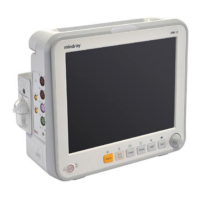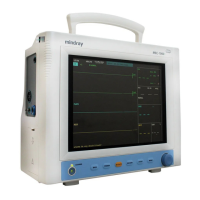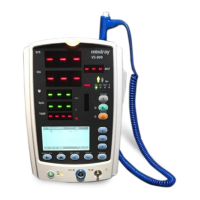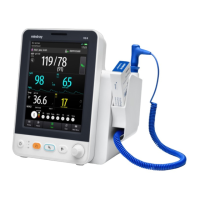3-8
3.6 Using an External Storage Device
An external storage device is used to prevent data loss in case of a sudden power failure. The
patient data such as trend data, waveform data, etc., will be automatically saved into the
external storage device during patient monitoring. In case of a sudden power failure, the
patient data can be retrieved from the external storage device after the patient monitor restarts.
So far only CF storage card is supported.
CF storage card can also be used to transfer patient data. USB storage card can be used to
transfer monitor configuration. Please refer to the corresponding sections for details.
To insert a CF storage card, open the compartment and then insert the card until the button
flips out.
To remove the CF storage card, follow this procedure:
1. In the main menu, select [Unload CF Storage Card].
2. Select [Ok] from the popup menu to unload the CF storage card. A status message
shown in the prompt message area will report completion of the unloading.
3. Press the button until the CF storage card flips out.
To browse the data saved in the CF storage card, follow this procedure:
1. In the main menu, select [Archives >>].
If the [Archives Access] is set as [Direct], you can directly enter into the [Patient
Data] menu.
If the [Archives Access] is set as [Password], you need a password to enter into
the [Patient Data] menu. This password is the same as the one for entering the
configuration mode.
2. Select [History Data >>]. Select a patient whose data you want to view from the
[Patient Data List] and then select [Review].
3. In the [Review] menu, select the data you want to review.
The monitor allows only the history data saved in the CF storage card to be reviewed so far.
As reviewing the history patient’s data is just like reviewing the current patient’s data, you
can refer to the chapter Review for details.

